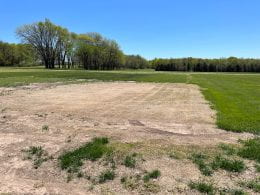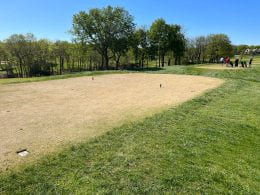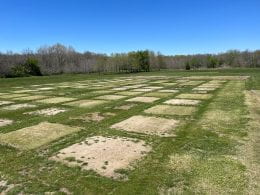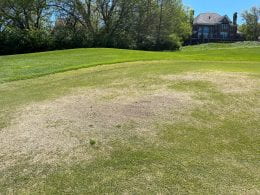Winter injury has shown up in Kansas and many other states on some warm-season grasses, including bermudagrass and zoysiagrass. Low temperatures came in mid-December at levels that were not common for warm-season grasses to deal with when they have not reached maximum cold acclimation. For example, daily low temperatures did not exceed 10 F between Dec. 22nd and 27th in Olathe, KS. In addition, little or no snow cover was out to help protect turf and wind speed was high (approached 30 mph during this period in Olathe) which could have caused desiccation damage as well. Temperatures during this period reached a low of -7 F. Winter injury has also been reported in Oklahoma, Texas, and Arkansas on both bermuda and zoysia. Injury tends to be most common in areas that have high levels of traffic, shade, or excessive thatch. There are also many different “micro-climates” across areas that can result in different levels of injury – from excessive to none.




